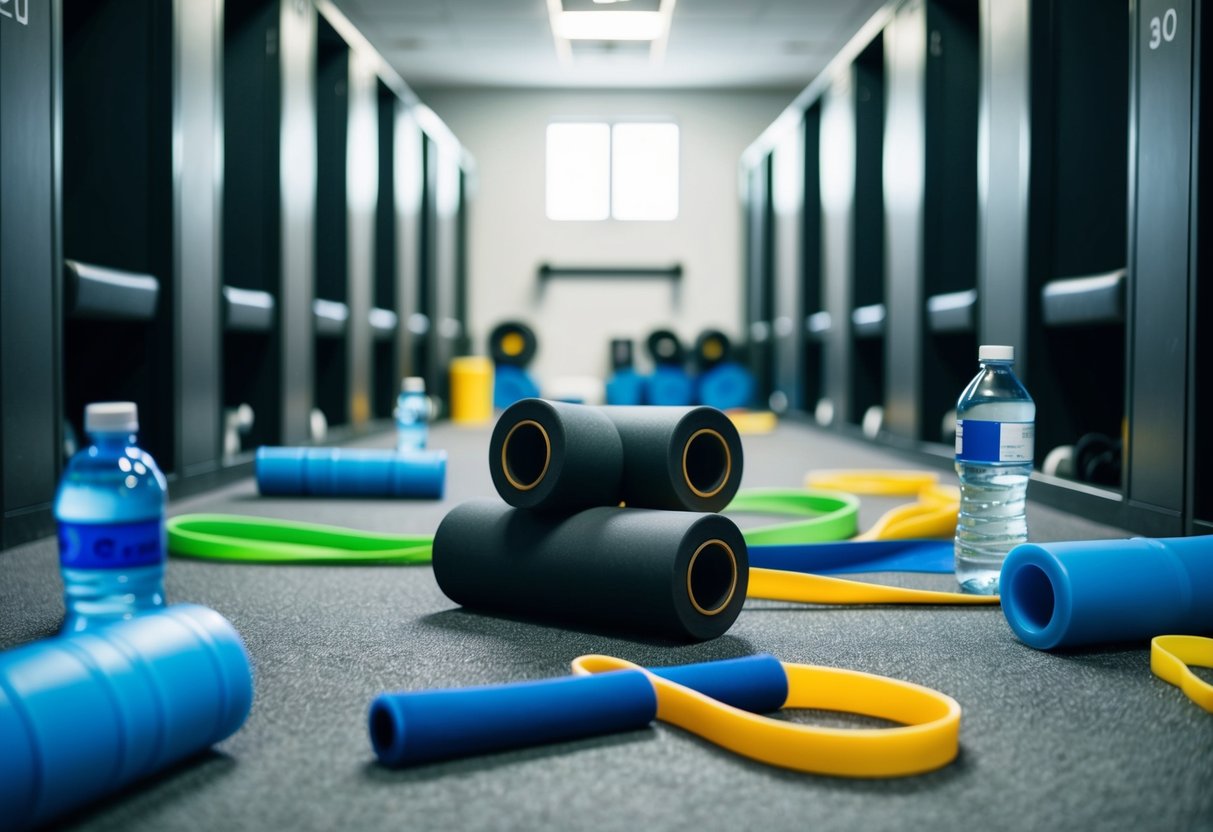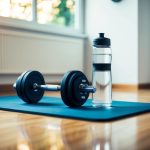
Cold and Heat Treatments
Cold and heat treatments are popular methods for reducing muscle soreness and aiding recovery. Effective usage can help athletes manage pain and ensure better healing post-exercise by targeting inflammation and promoting blood flow.
Ice Packs and Cold Therapy
Ice packs and related cold therapy tools are staples in sports recovery to address inflammation. They function by constricting blood vessels, reducing fluid accumulation in tissues, and numbing sore areas. Many athletes find relief with portable ice packs that mold to the body’s contours. These can be especially practical for localized treatment on injuries or muscle strains.
Cold therapy options include treatments like ice baths, which provide more extensive exposure to chilled temperatures. Devices from brands like Hyperice offer innovative solutions, delivering targeted cold application in a convenient format. While effective for many, cold therapy should be approached with caution and used in moderation to prevent skin damage or discomfort.
Heat Pads and Infrared Therapy
Heat pads bring comfort and relaxation to tired muscles. They enhance blood circulation to affected areas, promoting quicker recovery by delivering oxygen-rich blood to muscles. This influx reduces stiffness and aids flexibility, essential for high-impact sports activities. Many athletes incorporate electric heat pads into their recovery routines for consistent, adjustable warmth.
Infrared therapy, which uses red light to target deeper tissues, goes a step further. It’s known for its ability to penetrate skin layers, offering potential benefits in reducing muscle soreness and improving healing. Products like the Hyperice Venom 2 Back integrate vibration with heat to provide a comprehensive approach to muscle relaxation and recovery.
Compression Technology
Compression technology plays a crucial role in sports recovery by enhancing blood circulation and reducing muscle soreness. Athletes often use compression devices for quick recovery and improved performance.
Boots and Socks
Compression boots and socks are popular among athletes for their ability to boost circulation in the legs. Therabody RecoveryAir JetBoots are a standout option, utilizing dynamic air compression that adapts to the user, offering personalized support. Another choice is the Normatec Go, which provides portable and effective compression therapy. These devices help decrease muscle fatigue and inflammation, making them ideal for post-exercise recovery.
When selecting compression boots or socks, the compression level is essential for effectiveness. Different systems offer varied settings, allowing users to customize their experience. This ensures the device can effectively aid in speeding up recovery and reducing discomfort after intense workouts or competitions.
Recovery Compression Garments
Recovery compression garments, such as shorts, sleeves, and tops, offer targeted support to various muscle groups. These garments are designed to provide consistent compression across the body area, which can help in minimizing muscle oscillation and promoting efficient blood flow during recovery phases.
The Hyperice Normatec 3 Legs is known for its advanced compression technology, combining both air and gradient pressure to optimize recovery. Such garments are typically worn after exercise sessions or even during physical activities for additional support. The choice of garment should consider the specific needs of the muscles being targeted, as well as the appropriate compression level to avoid discomfort while maximizing recovery benefits.
Smart Technology in Recovery Gear
Smart technology in recovery gear is enhancing fitness regimes and aiding faster recovery. Fitness experts highlight the integration of apps and wearables for personalized feedback.
Wearable Fitness Trackers
Wearable fitness trackers are transforming how athletes monitor their recovery. The Whoop Strap is highly regarded for its capability to deliver precise heart rate variability (HRV) data, which helps in assessing fatigue and readiness for peak performance. These devices seamlessly blend into daily life, often boasting extended battery life to provide continuous monitoring.
They offer real-time insights into metrics such as sleep quality, exertion levels, and recovery status, ensuring users can make informed decisions regarding their workouts. Athletes leverage these insights to optimize their training routines and recovery periods, allowing them to avoid injury and promote long-term health.
App-Connected Recovery Tools
App-connected recovery tools like the PowerDot electric muscle stimulator provide targeted muscle recovery, leveraging smart technology for efficient use. By connecting to a smartphone app, users can control intensity and duration, customizing sessions to suit their recovery needs. This personalized approach enhances muscle stimulation effectiveness, supporting quicker and more effective healing.
These tools are particularly beneficial for muscle recovery, complementing traditional techniques with modern technology. With straightforward interfaces, these apps are accessible to users of all tech skill levels. Their portability and ease of use make them a favorite among athletes seeking advanced recovery solutions.
They ensure that users can manage their recovery effectively, providing detailed progress and usage reports.



